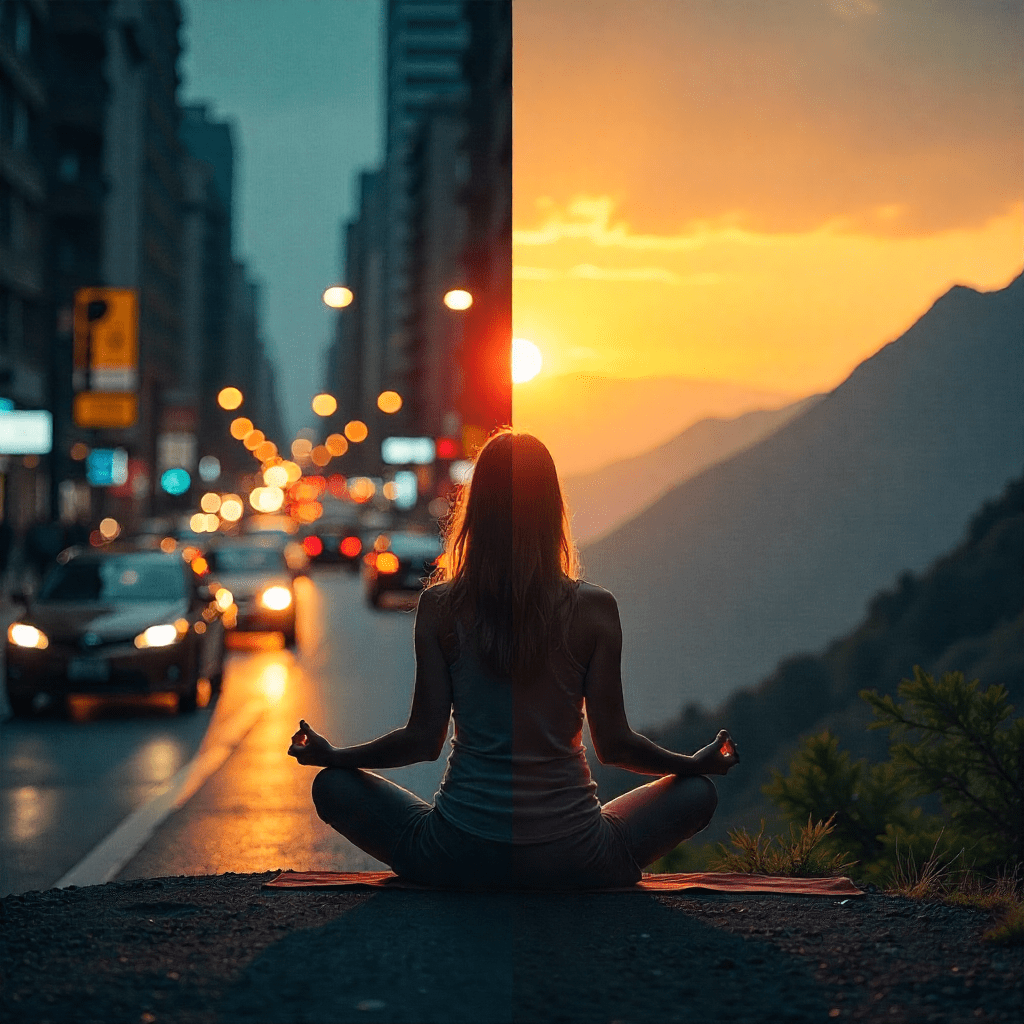The Benefits of Meditation: A Quiet Revolution
In a world overflowing with noise the benefits of meditation are becoming more valuable than ever. notifications, deadlines, and endless scrolling—silence has become rare. Yet, across cultures and centuries, the greatest teachers and seekers have shared a common truth: stillness is not empty; it is full of answers. From Himalayan monks chanting mantras to Silicon Valley leaders crediting mindfulness for clarity, meditation has transcended religion and geography to become one of the most powerful tools for transformation.
This article explores why meditation is gaining worldwide attention, its roots in Indian wisdom, its validation by Western science, and how anyone—from a stressed student to a CEO—can unlock its magic.
—
Why Meditation Matters Today
Anxiety, burnout, sleepless nights—these are the modern epidemics. We chase more information and stimulation, yet feel emptier. Meditation offers the opposite: a pause, a breath, and a return to self.
In Indian texts like the Bhagavad Gita, meditation (dhyana) is described as the doorway to higher consciousness. In the West, universities like Harvard and Stanford now study mindfulness as a proven therapy for stress and emotional health. The ancient and the modern meet here, agreeing on one thing: silence heals.
—
Stories of Transformation
The Entrepreneur’s Secret: Billionaire Ray Dalio credits meditation for making clear decisions. He says it’s “the single most important reason for my success.”
The Monk in the Market: In Varanasi, a busy city of sounds, a monk teaches locals to find peace by sitting quietly for 10 minutes each morning. Lives change: anxiety fades, focus improves.
The Survivor’s Breath: Cancer patients worldwide use guided meditation to ease pain and fear. Many call it their “safe space.”
Stories like these prove meditation is not just spiritual—it’s profoundly practical.
—
Science Meets Spirituality
Science is now proving what sages knew: the benefits of meditation include better focus, lower stress, and deeper well-being.
Research shows meditation:
Reduces stress hormones like cortisol.
Improves memory and focus by thickening the brain’s gray matter.
Lowers blood pressure and strengthens immunity.
Improves sleep and emotional balance.
Scientists now measure what sages have always known: a quiet mind is powerful.
—
How to Begin (Even if You’re Busy)
1. Start Small: Just 5 minutes in a quiet corner. Close your eyes, focus on your breath.
2. Mantras and Words: Chant “Om” or any calming word. Sound vibrations settle the mind.
3. Guided Tools: Use free apps like Insight Timer, Headspace, or YouTube meditations.
4. Nature Connection: Sit under a tree or watch the sky—natural silence is profound.
5. Consistency Over Perfection: It’s okay if thoughts wander. Show up daily.
Meditation Across Cultures
India: Dhyana is part of yoga, leading to self-realization.
Japan: Zen monks practice sitting meditation (zazen), focusing on breath and posture.
Christian Mysticism: Contemplative prayer invites silence to meet the Divine.
Middle East & Sufi Traditions: Whirling and chanting create trance-like states of union.
Different forms, same goal: returning home to the self.
—
When Stillness Speaks
Silence isn’t the absence of life; it’s where life’s whispers become loud enough to hear. Many describe sudden insights—solutions to problems, creative bursts, even emotional healing—when they meditate.
Famous writer Elizabeth Gilbert calls stillness her “creative well,” while Indian mystics say the soul’s voice is heard only in silence.
—
Practical Magic: Everyday Benefits
Better Focus: Meetings, exams, creative work become sharper.
Emotional Stability: Respond, don’t react.
Deeper Sleep: Calms the mind before bed.
Relationship Harmony: More patience, more listening.
Even 10 minutes daily can make visible changes in life and work.
—
Five Takeaways to Start Today
1. Choose a quiet spot: No phone, no distractions.
2. Sit comfortably: Chair, cushion, floor—comfort matters.
3. Breathe deeply: Slow inhalation and exhalation calms the body.
4. Anchor your mind: Focus on breath, sound, or a mantra.
5. End with gratitude: Whisper thanks for the pause.
Your Inner Sanctuary
Whether you are on a crowded subway or in a mountain village, meditation is always with you. It costs nothing, needs no equipment, and the only requirement is willingness. In the stillness, you meet your truest self.
Start small and watch the benefits of meditation transform your life
So, take a breath right now. Close your eyes. Listen. The silent power within you has been waiting all along.
Do follow Dhyanseed.com

